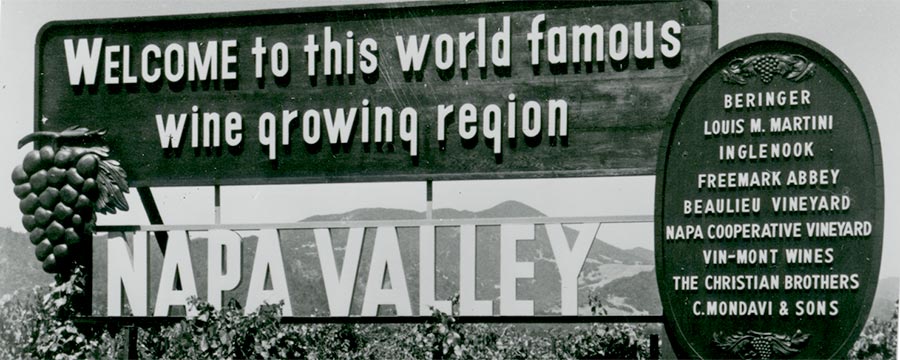
Wild grapes certainly grew in abundance in early Napa Valley, but it took settler George Calvert Yount to tap the area's potential for cultivating wine grapes. Yount built one of the homesteads in the area and was the first to plant Napa Valley grapes in 1839. Soon after, other pioneers such as John Patchett and Hamilton Walker Crabb helped introduce the first vitis vinifera grapes to the area.
Charles Krug is credited with establishing Napa Valley's first commercial winery in 1861. His success and leadership sparked a wave of new growth, and by 1889 there were more than 140 wineries in operation, including Schramsberg (founded in 1862), Beringer (1876) and Inglenook (1879).
This tremendous expansion, however, was soon brought to a halt. By the turn of the 20th century the industry saw prices plummet amidst a sea of surplus grapes, and the arrival of phylloxera dealt vintners a stunning blow as more than 80% of the valley's vineyard acreage fell victim to the destructive root louse. An even greater threat to the Napa Valley wine industry arrived in 1920 with the enactment of Prohibition. Vineyards and wineries were abandoned over the next 14 years with only a handful of wineries continuing to operate by producing sacramental wines.
With the repeal of Prohibition in 1933, Napa Valley's wine industry began its slow recovery. During this time, John Daniel Jr. resurrected Inglenook, Georges de Latour re-established Beaulieu Vineyards (BV), Louis M. Martini built his winery and the Mondavi family purchased Charles Krug Winery. Andre Tchelischeff, a Russian émigré working in France, came to Napa Valley to work for BV and became one of the great figures and mentors in the history of Napa Valley wine.
The Napa Valley's rich winemaking history began well before the California Gold Rush.
The early 1940s marked an important point in Napa Valley’s history when these early vintners realized they would be more successful working together than on their own. In 1944, seven vintners signed the agreement of association that formed the Napa Valley Vintners trade association, now 539 wineries strong.
The prominence of Napa Valley wine on the world stage is largely due to the efforts of our vintners during the last 50 years. People like Robert Mondavi, Napa Valley’s greatest marketer, fully embodied the collective spirit and camaraderie that gave rise to our success and quality.
If a single event can be credited with putting Napa Valley on the map, it was the Paris Tasting of 1976. This blind, comparative tasting pitted Cabernet Sauvignon and Chardonnay from California against the best wines of Bordeaux and Burgundy in a blind tasting. When the tasting was done, the judges had given top honors to Chateau Montelena Chardonnay and Stag’s Leap Wine Cellars Cabernet Sauvignon. Napa Valley would never be the same, and the number of wineries would grow from a few dozen to several hundred today.
In 1968, America’s first agricultural preserve was established here, declaring to the world that agriculture is the highest and best use of the land in Napa Valley. The Ag Preserve was the first in a series of initiatives Napa Valley’s vintners and growers often imposed upon themselves. From stream setback, hillside planting and winery definition ordinances to slow-growth initiatives, Napa Valley’s wine industry is considered the most highly regulated in the world. But the purpose is clear: to protect the agrarian character of the Napa Valley. Today, proactive programs like Napa Green Certified Land and Napa Green Certified Winery continue this legacy of environmental leadership.
A new chapter in Napa Valley's history was opened in 1981, when the Napa Valley Vintners hosted the first Napa Valley Wine Auction at Meadowood Resort. Over the years, Auction Napa Valley, as it is now known, has become the world’s most celebrated charity wine event, drawing participants from around the globe. As a result, the NVV through Auction proceeds has given $245 million to local health care, youth education programs and affordable housing since 1981.